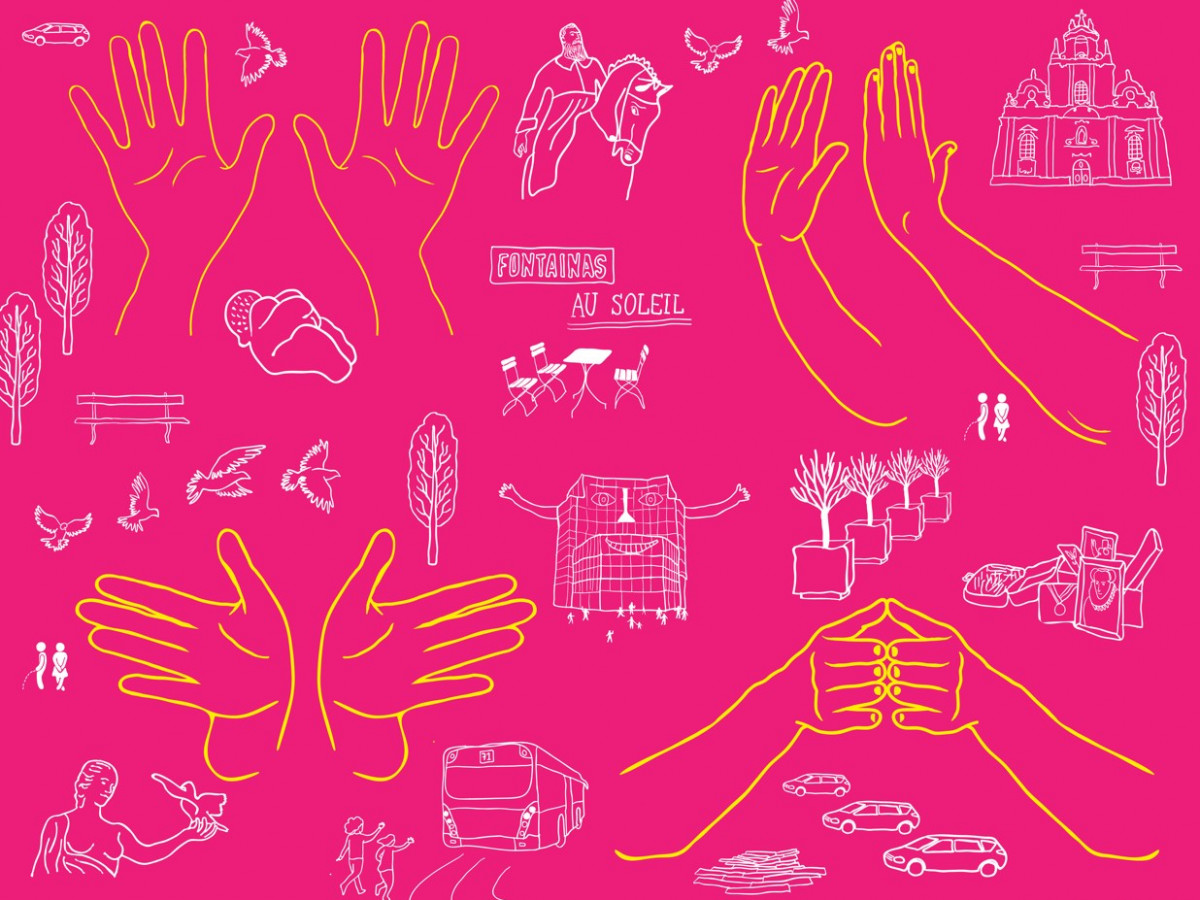
How does public space in Brussels reflect our gender-specific assignations and positions? Under what conditions and for what reasons is a space perceived as safe or hostile for women, trans, queer, and non-binary people? Between strategies of visibility and invisibility, what are our daily gestures of resistance and emancipation on the street and with others? And our queer gestures?
The official opening of Q(ee)R Codes – NEW Boundaries BXL 1000 by Anna Raimondo took place at the end of April. The artwork was purchased by the City of Brussels and was made possible thanks to the support of Moussem. It is part of a long-term nomadic artistic project launched by the artist in 2017. Moussem has been following the project since 2021. After being part of BXL Universel II - Multiplicity at the Centrale for contemporary art in 2021 and Q(ee)R Codes – NEW Boundaries Anderlecht 1070 in 2022, there are now 10 sound portraits scattered throughout the center of Brussels. At each location, there is a QR code made with marble mosaic that leads to an audio fragment.
The project questions the experiences of women, trans, queer, and non-binary people in the city. Q(ee)R Codes - New Boundaries explores the relationships between space, gender, social behavior, power, education, and urban planning through encounters and testimonies about the daily lives of women from different socio-cultural backgrounds.
The project, which will be visible until 2030, was subsidized by the Flemish Community Commission and the Wallonia-Brussels Federation and supported by BNA-BBOT, CENTRALE For Contemporary Art, Moussem – Nomadic Arts Center, nadine vzw, and Q-O2.
For more information, visit Anna Raimondo’s website.
How does public space in Brussels reflect our gender-specific assignations and positions? Under what conditions and for what reasons is a space perceived as safe or hostile for women, trans, queer, and non-binary people? Between strategies of visibility and invisibility, what are our daily gestures of resistance and emancipation on the street and with others? And our queer gestures?
The official opening of Q(ee)R Codes – NEW Boundaries BXL 1000 by Anna Raimondo took place at the end of April. The artwork was purchased by the City of Brussels and was made possible thanks to the support of Moussem. It is part of a long-term nomadic artistic project launched by the artist in 2017. Moussem has been following the project since 2021. After being part of BXL Universel II - Multiplicity at the Centrale for contemporary art in 2021 and Q(ee)R Codes – NEW Boundaries Anderlecht 1070 in 2022, there are now 10 sound portraits scattered throughout the center of Brussels. At each location, there is a QR code made with marble mosaic that leads to an audio fragment.
The project questions the experiences of women, trans, queer, and non-binary people in the city. Q(ee)R Codes - New Boundaries explores the relationships between space, gender, social behavior, power, education, and urban planning through encounters and testimonies about the daily lives of women from different socio-cultural backgrounds.
The project, which will be visible until 2030, was subsidized by the Flemish Community Commission and the Wallonia-Brussels Federation and supported by BNA-BBOT, CENTRALE For Contemporary Art, Moussem – Nomadic Arts Center, nadine vzw, and Q-O2.
For more information, visit Anna Raimondo’s website.